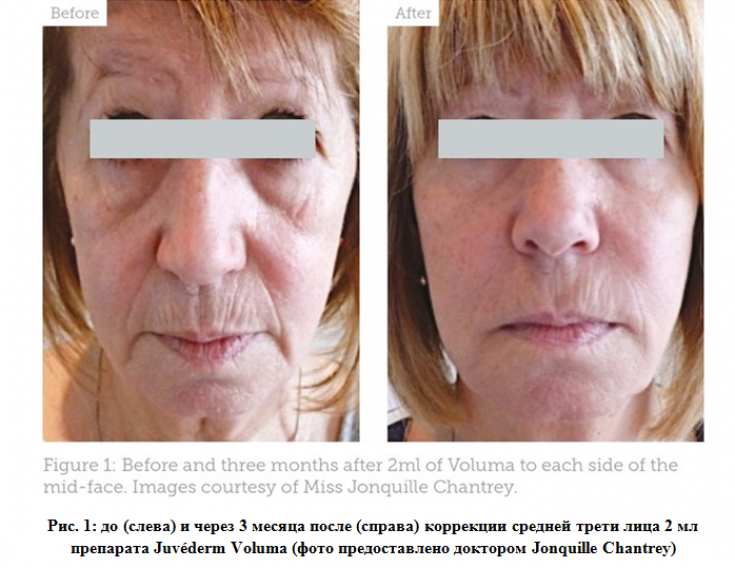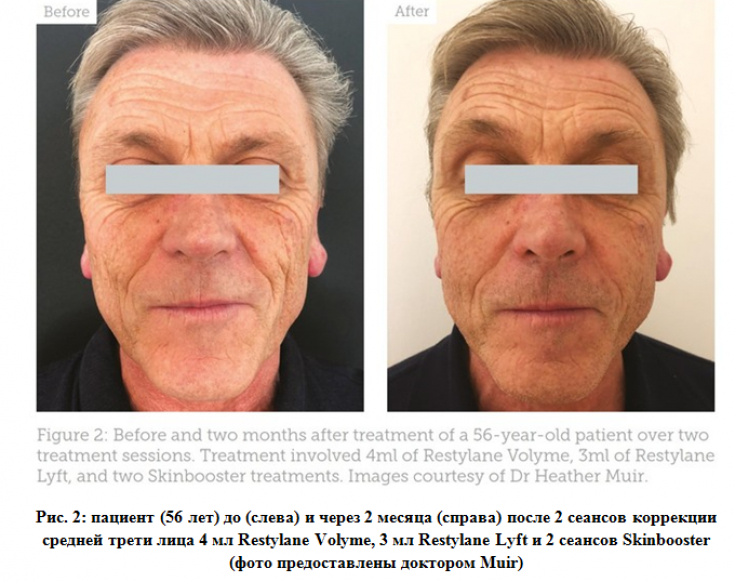Loss of adipose tissue and reduction of fat pads – one of the most significant factors in the aging of the middle and therefore the lower third of the face.
The solution to the problem of lack of volumes in this article is considered by esthetic surgeon Jonquille Chantrey, esthetician and cosmetic surgeon Benji Dhillon, esthetician and dentist Heather Muir, doctor -esthetician Simon Ravichandran and plastic surgeon Tunc Tiryaki: experts share their approaches to restoring volume in the middle third of the face.
How volume loss affects the middle third of the face
The lion's share of the volume lost with age is in bone tissue and deep fat compartments. Dr. Ravichandran believes that the deep medial fat pad of the cheeks – the most significant area in the context of volume loss on the face.
While volumes are reduced at both the deep and superficial levels, fat loss and deep fat depletion – perhaps the most significant factor in the aging of the middle and therefore the lower third of the face.
Loss of volume in deep fat pads is the cause of:
• appearance of nasolabial folds;
• elongation of the junction of the lips and cheeks;
• formation of depressions under the eyes;
• flattening of the middle third of the face;
• deformations of the contours of the zygomatic zone.
There are a number of factors that increase the loss of adipose tissue in the middle third of the face:
• internal aging (heredity);
• gender differences (in women, the loss of volume is more noticeable, since their cheeks are naturally more rounded);
• external factors (lifestyle features –smoking, drinking alcohol, intense sports).
Loss of adipose tissue and depletion of deep fat pads – perhaps the most significant factor in the aging of the middle and therefore the lower third of the face.
Comprehensive evaluation before restoration of volumes in the middle third of the face
It is important to understand that the loss of – is not the only factor influencing the aging of the middle third of the face. Changes in bone, muscle tissue and skin also complete the picture of age-related changes in the face. The volume characteristics of the middle third can also be affected by the loss (removal) of teeth.
Perfect Volumetric Face Correction: BK P-Line Profile Assessment
At the consultation stage, doctors conduct a comprehensive assessment of the face, taking into account:
• view at rest and during facial expressions;
• view from different angles;
• facial proportions;
• status of all third parties, starting from the top.
Mid-face correction technique by Dr. Ravichandran
Often, deep fat compartments require correction with age. To restore deep volumes, Dr. Ravichandran considers it necessary to inject the filler under the muscles.
The doctor prefers to use a cannula (for safety reasons and for more natural results).
The injection point is located in the lateral part of the zygomatic arch – it provides access not only to the middle third of the face, but also to the area of the eyebrows and temples, which may also require correction.
Injection target zone – deep medial cheek fat compartment, which is located under the SMAS layer. You can check the accuracy of the insertion by palpation.
For correction, the doctor uses a 22-gauge STERiGLIDE cannula and Belotero Volume filler, which provides a good lifting effect, while being soft and holds its shape well.
Technique of drug administration – fan.
Dr. Chantry's view of volume restoration in the midface
The doctor prefers to use the Juvéderm line. For the cheek area, she chooses the Voluma filler, which provides maximum lifting.

However, for younger patients who do not need a lifting effect or significant projection, the doctor uses Volift, which provides soft contours and an attractive result.
The doctor always starts correction of the middle third from the lateral part of the face and moves towards the medial direction, since not all patients need volume in the medial part.
Dr. Dillon's approach to volumizing the middle third of the face
When correcting deep fat pads, the doctor focuses on the volume of superficial fat. If there is little adipose tissue, the doctor uses Teosyal RHA 4.
Otherwise, the doctor will inject Teosyal Ultra Deep as this product is denser, more viscous and volumizing. As a result of the introduction of a small amount of the drug into deep compartments, it is possible to obtain a good projection, lifting and volumization.
To restore volumes in deep fat pads must be injected directly on or over bone.
When working with superficial fat pads, it is important to inject the drug over the muscle.
For safety reasons, in his practice, the doctor uses both a needle and a cannula (for example, in the lateral part of the cheeks – a needle, and in the medial part, where the risk of damage to blood vessels is higher, – a cannula).
The volume characteristics of the middle third can also be affected by the loss (extraction) of teeth.
Middle Face Volumetric Correction by Dr. Muir
The doctor starts work from the upper part of the face, taking into account the loss of volumes in the temporal zone, the replenishment of which contributes to the lifting of the upper lateral part of the face.
When correcting the middle third, the doctor starts from the upper lateral part of the face, along the zygomatic arch, to create a lifting effect, then moves laterally and upwards, after which he injects the product (most often – Restylane Lyft). The choice of filler is due to its high elasticity and ability to support tissues.

The doctor uses two techniques (depending on the patient):
1) inserts the needle and simultaneously pulls the tissue up, then moves the needle to the periosteum and performs aspiration, and then injects the required amount of product;
2) if the patient's face is highly skeletal, Restylane Defyne is injected with a cannula onto the bone in a linear technique.
The doctor also uses a cannula when working with the furrow (due to the location of the vessels in this area).
Selection tool – cannula STERiGLIDE 25 gauge, 38 mm.
Rules for safe facial correction in the middle third
When working in the middle third of the face, the practitioner should be familiar with the anatomy as well as the danger zones. Other parts of the face may also need to be corrected for the most natural results.
Adapted from Aesthetics







Add a comment